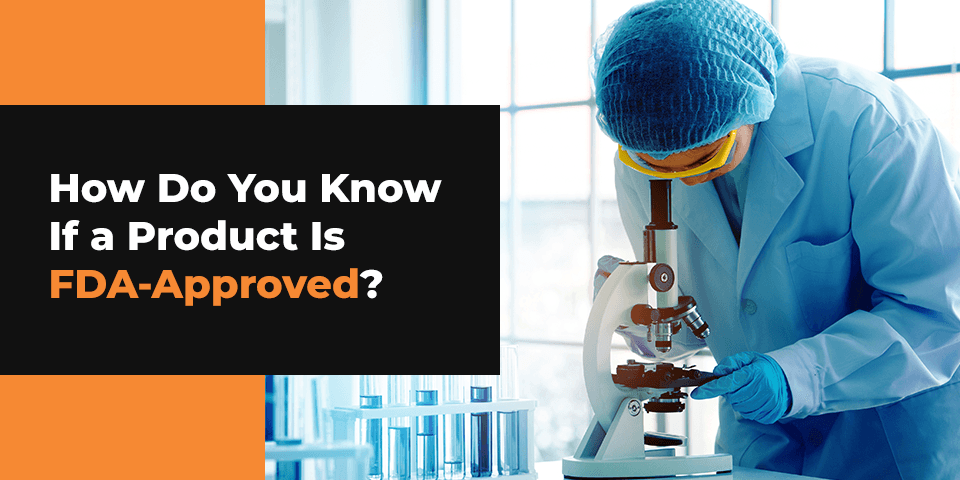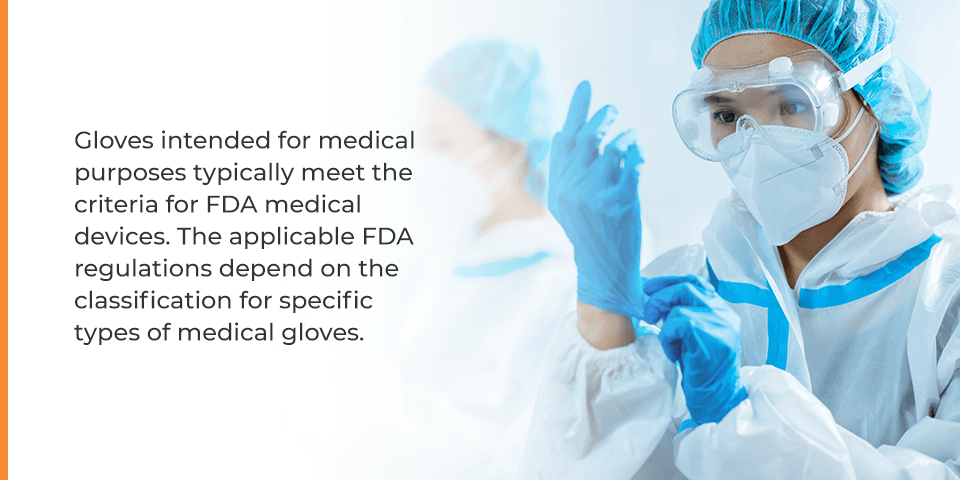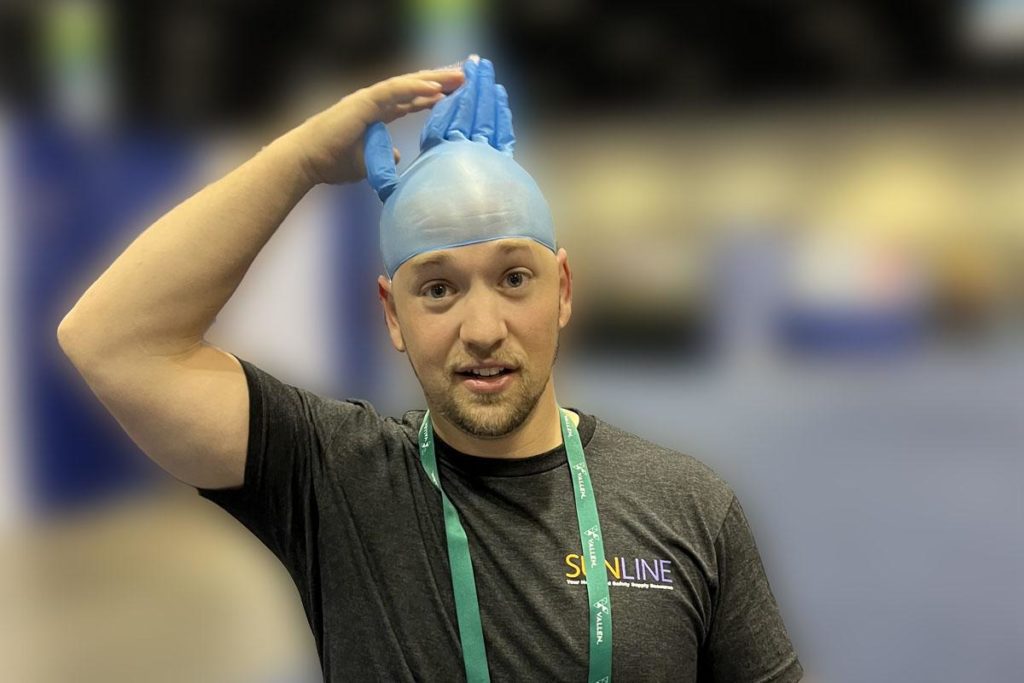
How Do You Know If a Product Is FDA-Approved?
The U.S. Food and Drug Administration has regulatory authority over a broad scope of products. The FDA’s regulatory jurisdiction may align closely with other government agencies, making it challenging for consumers to know which agency is responsible for approving specific products.
Generally, the FDA is responsible for regulating food, medical devices, drugs and biologics, cosmetics, veterinary products, tobacco products and radiation-emitting electronics. Compliance with FDA regulations does not necessarily indicate FDA approval — for example, tobacco products can meet marketing requirements, but the FDA has not issued any indication that they are safe.
FDA-approved products get reviewed for safety and effectiveness before commercial distribution. Not all products undergo FDA premarket approval. When safety issues arise, enforcement of the FDA’s regulatory authority may impact products after they’re already on the market. Exceptions may apply to this list of FDA-regulated product categories, so it is crucial to know the FDA’s role in public health regulations and medical devices.
FDA Medical Device Classification
The FDA classifies medical devices based on the level of control necessary to assure the products’ safety and effectiveness. Medical device classification factors include:
- The device’s intended use.
- Any specialized indications for use.
- Associated risks posed to the patient and the user.
Devices that pose a high risk — and therefore require more controls for safety and effectiveness — will have a different classification than lower-risk devices, which only require general safety controls. The following three classifications distinguish medical devices and their FDA requirements.
- Class I: Low-risk devices with general controls. Most Class I devices are exempt from premarket notification and approval requirements for marketing.
- Class II: Moderate-risk devices with general and special controls. Most Class II devices require a premarket notification 510(k) for marketing to demonstrate that the product is substantially equivalent to a legal predicate device already on sale.
- Class III: Higher-risk devices with general controls and premarket approval. Class III devices require premarket approval based on sufficient, valid scientific evidence that the products are reasonably safe and effective.
Class I or II devices without exemptions will require a premarket notification 510(k) before becoming publicly available. However, most Class III devices will need a premarket approval application to receive clearance for commercial distribution. All devices require general controls for safety and effectiveness.
How Does the FDA Regulate PPE?
Personal protective equipment is a blanket term describing any wearable products designed to protect against the spread of illness or infection. Correct PPE use alongside other infection control methods can minimize disease risk from viral and bacterial contaminants. PPE products include protective apparel such as gloves, gowns, helmets, goggles, face shields, face masks and respirators.
Due to the broad spectrum of medical devices covered by the FDA, the quality system regulation identifies the essential elements each manufacturer must establish and embody. Manufacturers are responsible for applying the relevant quality system requirements to their PPE products intended for use as a medical device. They should also uphold applicable consensus standards for protection, though these are voluntary.
The FDA can issue an emergency use authorization (EUA) to regulate medical devices when necessary. Manufacturers will have to demonstrate that their PPE meets specific criteria for performance, labeling and intended use — their PPE must be substantially equivalent to a predicate device already on the market. Depending on the product classification, the FDA approval process may look quite different.
What Is the FDA’s Premarket Notification 510(k)?
Before a company can market any medical device, the product must meet or exceed FDA requirements. FDA-approved medical devices require a premarket notification 510(k), and higher-risk devices may even need premarket approval before becoming commercially available to consumers. Manufacturers can only market Class I or II devices with exemptions without a premarket notification 510(k).
A 510(k) submission should demonstrate that a device’s safety and effectiveness are substantially equivalent to a legally marketed, predicate device. The new and predicate device should have the same intended use, and any differences in technological characteristics or performance data must not raise safety and effectiveness concerns.
How to Know If a Product Is FDA-Approved
The FDA will not approve a device for marketing in the U.S. until they receive an order finding it is substantially equivalent to an existing one. FDA-approved medical devices will have the 510(k) identifying number, showing that the FDA has found the device essentially equal to similar medical devices currently on the market.
Anyone who wants to market a Class I or II device with the intent of human use must submit a premarket notification 510(k) to the FDA. Most Class III devices will require a premarket approval application instead, though the agency requires a 510(k) submission for Class III devices that do not need premarket approval.

FDA Regulations for Medical Gloves
Gloves intended for medical purposes typically meet the criteria for FDA medical devices. The applicable FDA regulations depend on the classification for specific types of medical gloves. The gloves most commonly used for medical purposes include the following.
- Patient examination gloves: These medical gloves — intended for the examiner to wear on their hands to prevent contamination — are Class I devices requiring a premarket notification 510(k).
- Surgeon’s gloves: These medical gloves — intended for operating room personnel to wear to protect a surgical wound from contamination — are Class I devices requiring a premarket notification 510(k).
Manufacturers of patient examination gloves or surgeon’s gloves must provide reasonable assurance of their devices’ safety and effectiveness. Tests to evaluate gloves are based on the American National Standards Institute standards for:
- Performance during simulated use.
- Dimensions.
- Tensile strength and elongation.
- Residual powder.
- Puncture.
- Leakage.
- Viral and bacterial barriers.
- Heat aging degradation.
ANSI-approved standards recognized by the FDA for medical glove testing include ASTM D3577, ASTM D3578, ASTM D6319, ASTM D5250 and ASTM F1342. The FDA does not require testing, premarket notifications or premarket applications for gloves intended for non-medical purposes.
FDA Regulations for Testing Kits
Health providers use testing kits, or in vitro diagnostic devices, to collect and perform tests on samples from the human body. Using a swab or blood sample, IVDs can detect diseases or other conditions. Testing kits can help a care provider monitor a patient’s overall health or examine the effectiveness of cures, treatments and disease prevention methods.
Testing kits must be EUA-authorized by the FDA. A developer’s EUA submission should include the data and information listed on current FDA EUA submission templates to facilitate the preparation and submission for testing kit authorization.
FDA Regulations for Medical Gowns
Gowns and other protective apparel are FDA medical devices when the product manufacturers intend their use for medical purposes. Surgical gowns, or medical gowns, are for use in health care settings during surgical or invasive procedures. These uses have a moderate or high risk of contamination and require specific liquid barrier protection standards. Surgical gowns are a Class II device requiring a premarket notification 510(k) to be clear for sale. The FDA recognizes ANSI standards for testing when evaluating a 510(k) submission.
ANSI-approved standards recognized by the FDA include the following.
- ASTM F2407: Standard specifications for surgical gowns intended for medical purposes
- ASTM D5034 and ASTM D1682: Tensile strength
- ASTM D5587, ASTM D5587 and ASTM D1424: Tear resistance for woven and non-woven materials
- ASTM D751: Seam strength of stretch woven of knit materials
- ISO 9073 Part 10: Lint generation
- ASTM F1868 Part B, ASTM D6701 and ASTM D737-75: Water vapor transmission and breathability
FDA also requires testing for barrier protection on all gowns intended for use in health care facilities. Gowns may fall into one of four levels of protection based on their performance results.
- Level 1: Minimal risk for use during basic care, standard isolation or as visitor protection
- Level 2: Low risk for use while drawing blood, suturing or in the pathology lab or intensive care unit
- Level 3: Moderate risk for use during arterial blood draw, intravenous line insertion, trauma cases or in the emergency room
- Level 4: High risk for use during fluid-intensive, surgical or invasive procedures or when non-airborne infectious diseases are likely
Surgical gowns must receive verification and validation for use at any risk level. The product label should describe an intended use, including the appropriate level of protection. Labeling indicates the gown has undergone testing and meets or exceeds the applicable performance standards for its intended use.
Regulations for Face Masks and Respirators
Protective face coverings — such as face masks and respirators — undergo testing and certification by the National Institute for Occupational Safety and Health. While NIOSH evaluates face covering performance, the FDA can clear them for sale and may even authorize specific respirator types for emergency use. It is best to consult NIOSH’s certification process for disposable and reusable air-purifying respirators for particular regulations regarding face covering performance.
How to Find a Manufacturer’s FDA Registration Number
From PPE manufacturers to distributors like SUNLINE Supply, every company that processes medical devices must register with the FDA annually. An FDA registration number indicates that the product manufacturer has registered and is in compliance with the FDA’s health and safety guidelines.
Each registered manufacturer gets assigned a unique registration number, making it easy for you to look up a company’s registration in the appropriate FDA registration database. You can access the public registration and listing database for medical devices through the FDA’s website. To find a specific manufacturer’s FDA registration number, you will need to provide some of the following information about the company:
- The facility’s trade name
- The specific product name
- The facility owner or operator’s name
- The facility’s home state
- The type of facility or establishment
- The country of origin, if based outside the United States
Shop PPE From SUNLINE Supply
SUNLINE Supply only carries quality PPE products. We offer medical gloves, masks, test kits and more at an affordable price. Buy our PPE products in bulk today, or contact us for more information about the products you require.

